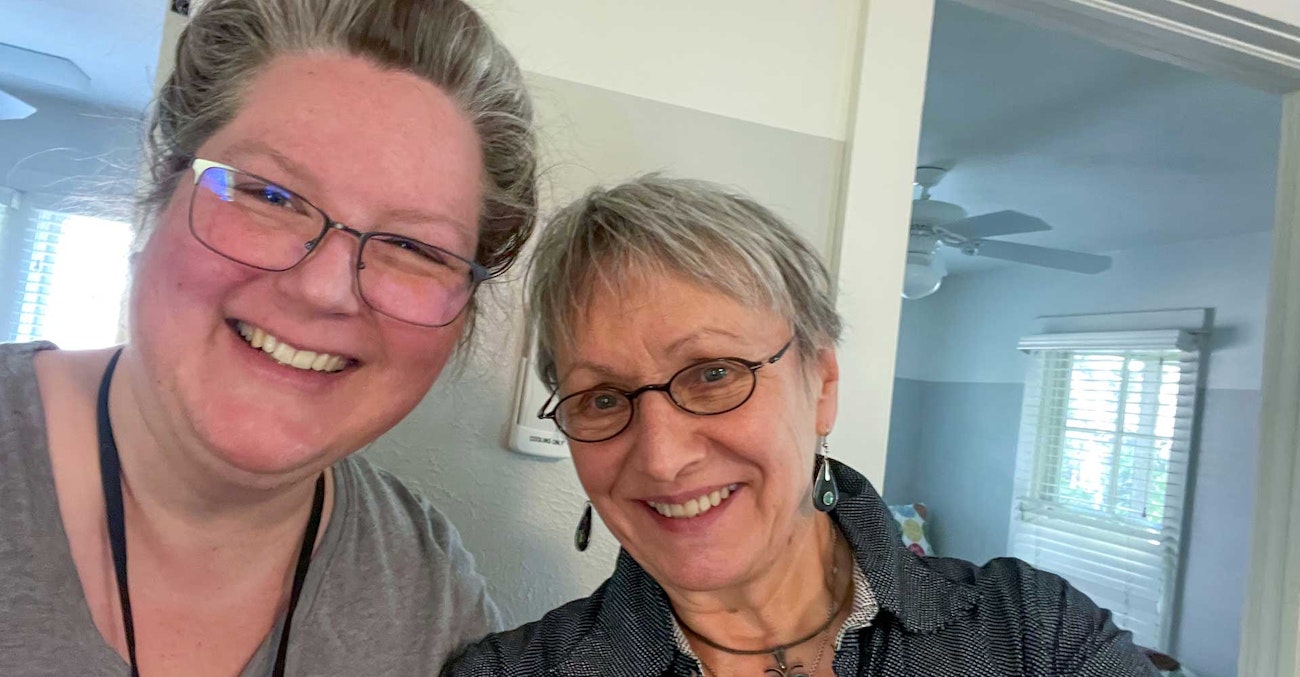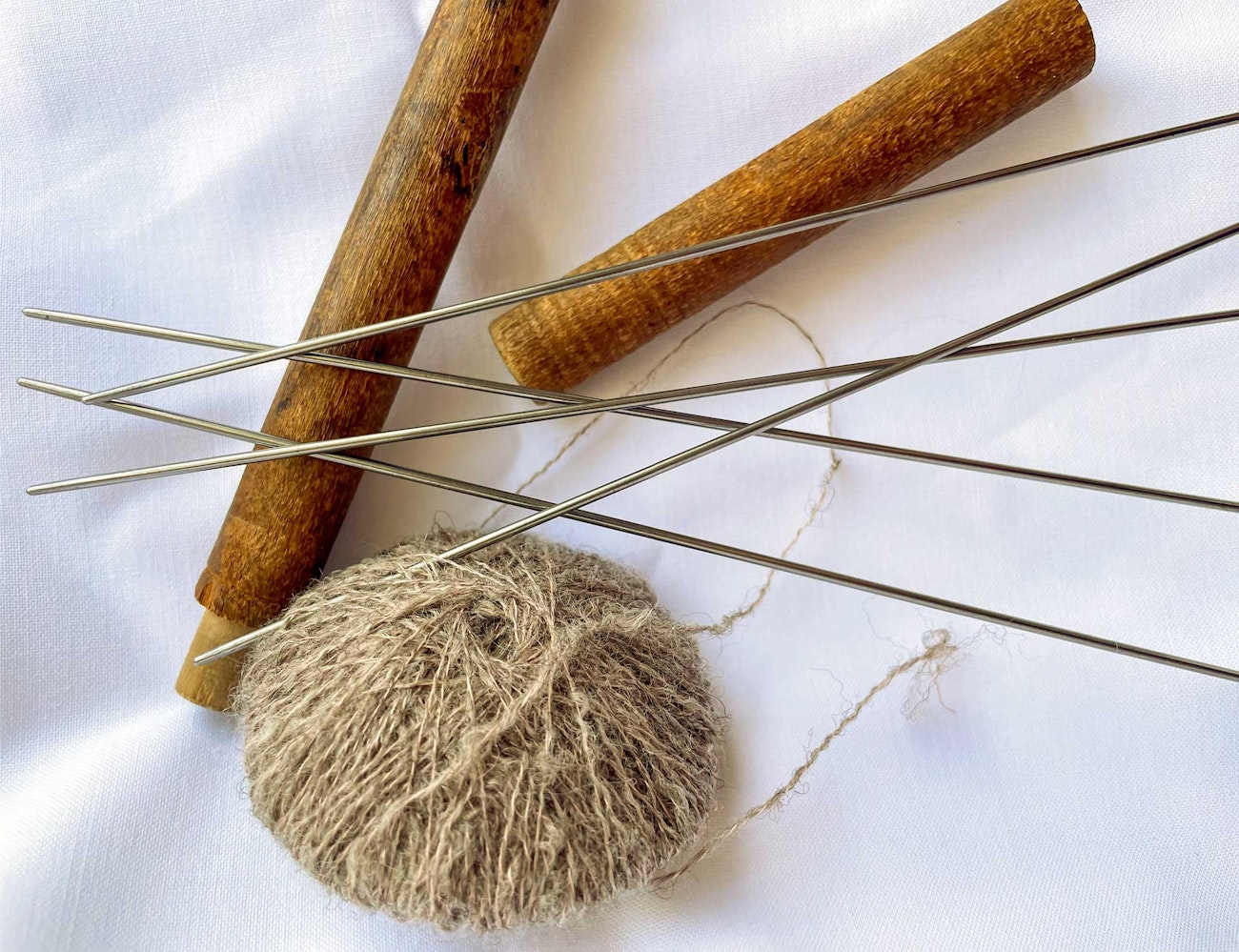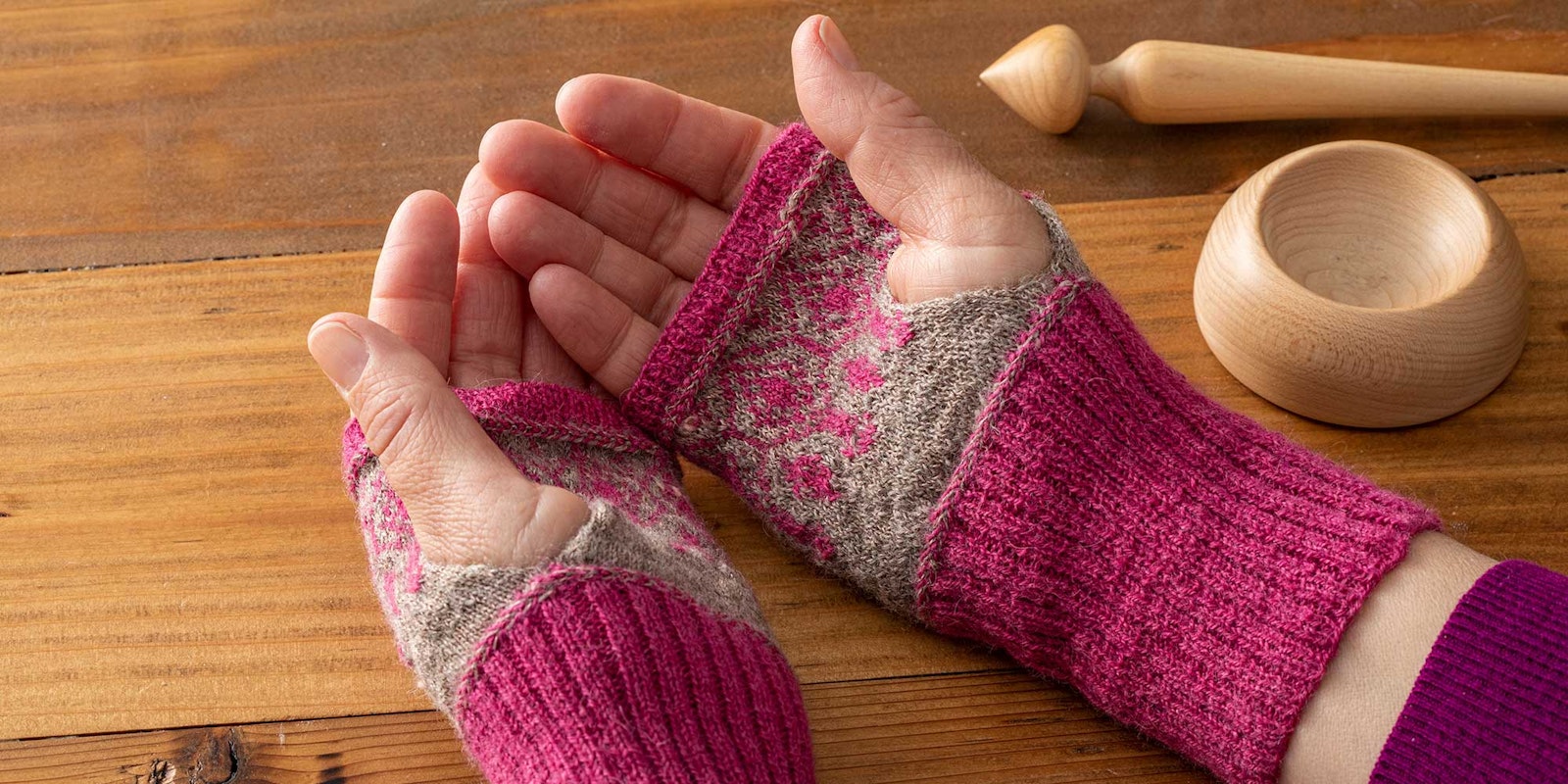Elsa Sturite was supposed to be on the Titanic. But she wasn’t, so I went to Colorado. You see, Elsa was my great-grandmother. She emigrated from Latvia in search of a better life and found it in Brooklyn, New York, in the early twentieth century with my great-grandfather Carl. (He was an immigrant who sweet-talked his way into the United States, but that’s a whole different story.) She brought her knitting, tatting, and sewing skills along with some tools, and she and Carl married and started their family.
While Carl worked with extended family at an iron mill (and made the kitchen cabinet hardware for their first home), Elsa flourished as a seamstress in the New York City garment industry. The phrase “dab hand with a needle,” I swear, was coined after seeing her skills in action. Fast-forward a couple of generations and you find my mother, Sarah, who learned handwork from her grandmother, Elsa, instructing me (Jess) in the art of knitting, crocheting, quilting, alterations, and just about anything else you can do in the realm of needlework.
Elsa, with her third-class ticket, didn’t get on the Titanic, so the gene pool lived on. And I am here to tell about it. “But what has that got to do with Colorado?” you ask?
 Carl and Elsa on their wedding day, May 30, 1916, in Boston. Courtesy of Jess Hupp
Carl and Elsa on their wedding day, May 30, 1916, in Boston. Courtesy of Jess Hupp
A Thread Comes Full Circle
Boulder, Colorado, was the site of the 2021 Spin Off Autumn Retreat (SOAR). As an early birthday present to myself, I snagged one of the coveted tickets and left family and pets behind to spend a week with my “fiber tribe,” spinning, knitting, and learning. It was breathtaking—not only because of the views and gorgeousness of the Colorado Chautauqua environs, but also thanks to the joy of being with a group of people who all spoke the language of fiber. Conversations abounded with deep dives into fiber types, tools, mishaps, discoveries, projects, and color theory. You name it—we talked about it.
The best part of my SOAR experience was getting to be part of a two-day intensive class with Galina Khmeleva, the famed Orenburg lace instructor and designer. I had already been spinning with a Russian spindle for a bit but was stymied by the process of plying. The intensive course with Galina did the trick. I spun. I plied. I set the twist. I had real yarn.
At this point, I had never made anything with my handspun yarn. Ever. I just had a bunch of pretty skeins sitting in boxes. My dream, however, was to use my experience with Galina to lead me back to Elsa’s roots in Latvia. I wanted to spin for Latvian handcoverings that I could knit using Elsa’s knitting pins.

Jess (left) and Galina at SOAR 2021. Courtesy of Jess Hupp
Back at home, I set to spinning for a project with the good advice from SOAR and Galina fresh in my mind. Soon, I had multiple spindles full of Russian-spindle spun singles. I followed my notes from class, wound the singles with a strand of silk thread on my plying spindle, and I was off plying.
When it came time to steam the yarn, which is often referred to as “setting the twist,” I didn’t have a pot of soup simmering on my stove all day (the traditional Orenburg way to steam the yarn), so I dampened a handkerchief, wrapped it around my balls of plied yarn, and left it all on the dashboard of my car while I was at work. Et voilà! Leaving work, I checked the bundle: the handkerchief was bone dry, the yarn was fluffy, and I was ready to knit!
I had two colors of yarn—one mill-spun, one handspun. I scoured my fiber library and found a colorwork pattern based on Latvian weaving patterns and added my own spin (see note 1). I planned my Latvian braid insertion (see note 2). And finally, I picked up my great-grandmother’s knitting pins.

Elsa’s knitting pins and wooden case traveled with her from Latvia to the United States. Photo by Jess Hupp
For general reference, Elsa’s size 0000 needles are most assuredly called “pins” because they are so long and so thin; referring to them as knitting needles seems inadequate. Somehow these pins and their cylindrical wood case had survived the years (and a sea crossing), and I was finally going to work a project that these antique tools were made to complete.
This began a chapter of the story that involved a lot of frogging, tinking, drinking, and colorful adjectives before I had completed even one of these mitts. I can neither confirm nor deny that one or more of great-grandma’s steel pins may (or may not) have bent slightly in the pursuit, cat fur may (or may not) have been knitted into the colorwork, and my knuckles may (or may not) have permanent dents from gripping tiny needles for hours.
In the end, I had mitts that incorporated my handspun, a Latvian braid or two, and a modified ethnic weaving pattern. And with that, a circle of life was complete: a Nashville girl visits Colorado to learn from a Russian woman so she can make fingerless mitts to show her New York–born mother what she made with her Latvian great-grandmother’s knitting pins, which wouldn’t have been available if Elsa had been on the Titanic.
Notes
- Based on Joyce Williams, Latvian Dreams: Knitting from Weaving Charts (Pittsville, WI: Schoolhouse Press, 2000), chart 166.
- Learn several variations of Latvian braid at pieceworkmagazine.com/what-is-latvian-braid.
Jess Hupp is a fiber fanatic from Nashville, Tennessee. She is especially grateful that Elsa’s traveling partner fell ill (but not seriously ill), making them both miss their crossing on the Titanic. Though currently working in mortgages, Jess dreams of finding a way of supporting herself through her love of needlecraft.
This article was originally published in Spin Off Winter 2023.

